Meet the Vireo Bird Family: Sweet Summer Singers
Updated: Aug. 18, 2021
Get to know the vireo bird family, including red-eyed vireos and warbling vireos. Learn what they look like and where to spot them.
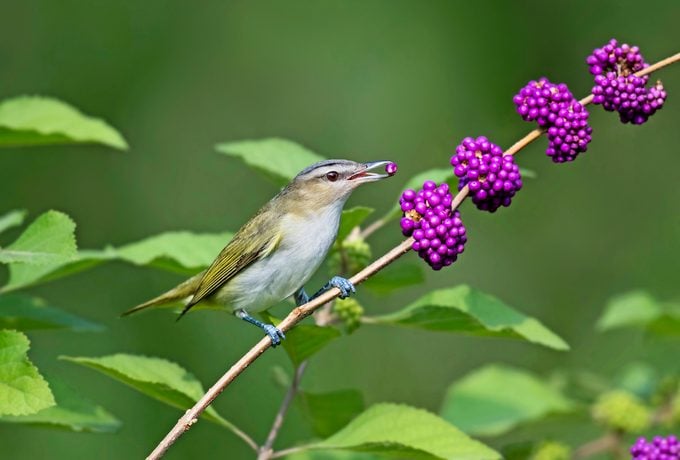
Vireos are often heard but seldom seen. This family’s members are found all over North America in the warmer months, and about a dozen vireo species are widespread north of the Mexican border. Their songs are among the most familiar sounds of late spring and summer, but the birds are actually very good at staying out of sight among the foliage. It’s worth the effort to get to know this melodic bird family.
Check out 8 types of orioles to look for in North America.
Treetop Singers
Red Eyed Vireo
The red eyed vireo is a noteworthy summer bird found across the eastern United States and most of southern Canada. Although it is widespread, it hides high in trees, moving slowly among the leaves. Plain colors—olive above, white below, with just a couple of black stripes on the face—make it even harder to spot. But a red eyed is easy to hear, because the males sing almost incessantly in late spring and summer, even on hot afternoons.
A red eyed vireo’s song is a series of short, whistled notes separated by pauses. The swee?…sooyup… sissewit…swiswi… sounds like a choppy version of a robin’s voice and goes on and on. An old nickname for this species was “preacher bird,” perhaps applied by someone who thought the Sunday service dragged on too long. Red eyed vireos live mainly in deciduous forests, but they are heard in towns and suburbs with enough mature trees.
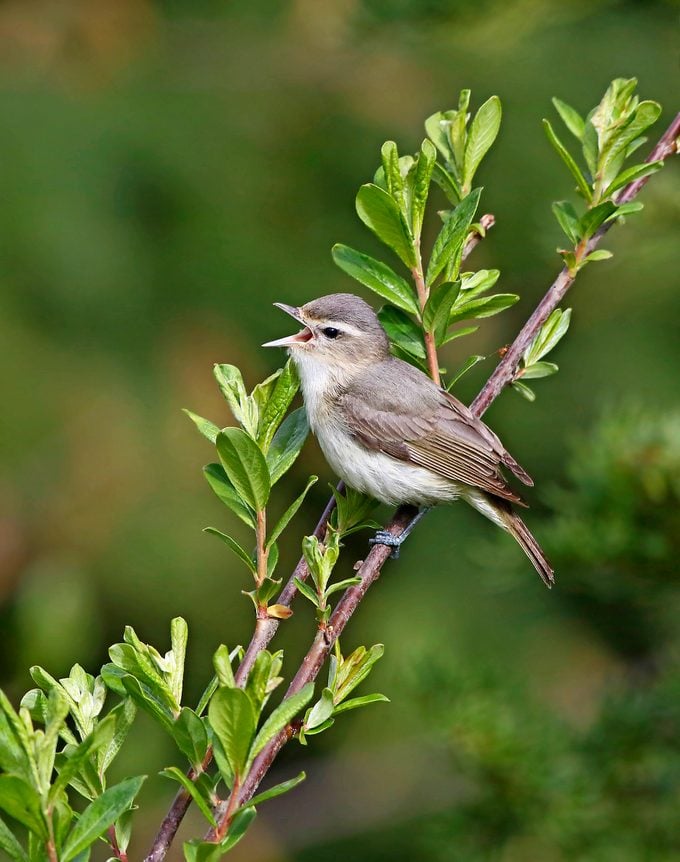
Warbling Vireo
The warbling vireo, all grayish and white with a pale eyebrow, is plainer in appearance than the red-eyed. In summer it’s found in woodlands from coast to coast, but like the red-eyed it spends the winter deep in the tropics. Its song is very different. As the name suggests, the male makes a short, musical warbling, not a series of separate notes. He sings all day, even when he’s sitting on the nest incubating eggs. The nest, as with most vireos’, is a shallow cup, often suspended in a twig’s fork.
Discover 8 different kinds of bird nests and how to spot them.
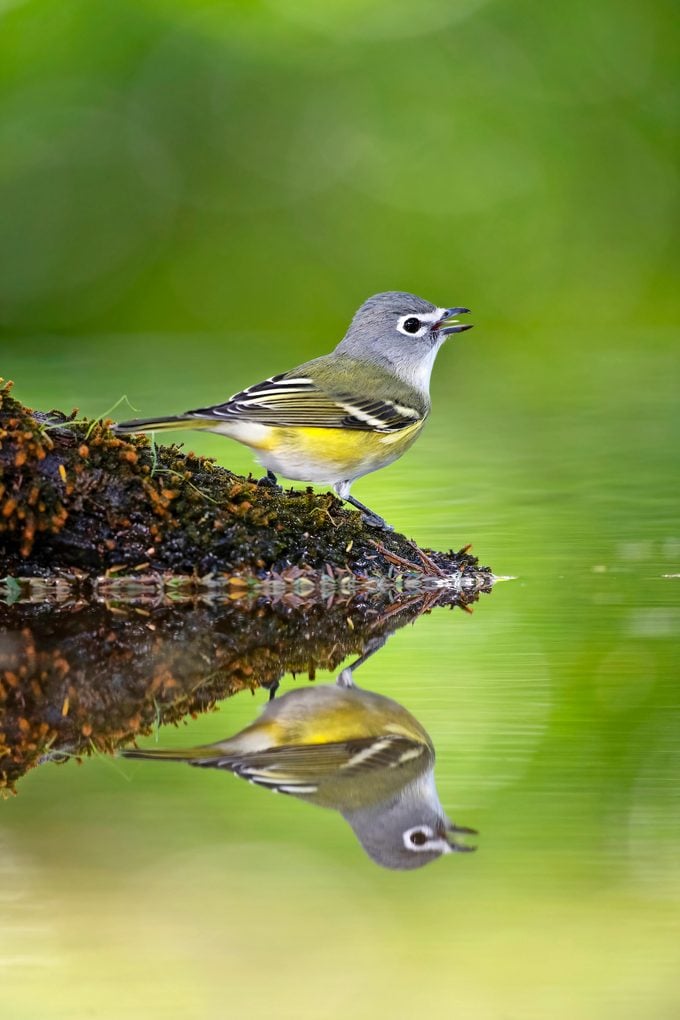
Species with Eye-Rings
Blue Headed Vireo
Some vireos are more boldly marked, with contrasting wing bars and bold eye-rings that resemble a pair of glasses. One example, the blue headed vireo, spends the summer in the mixed forests of eastern Canada, northeastern states and the Appalachians. It wears a colorful pattern, with blue-gray head, green back, yellow on the sides, and white throat and chest.
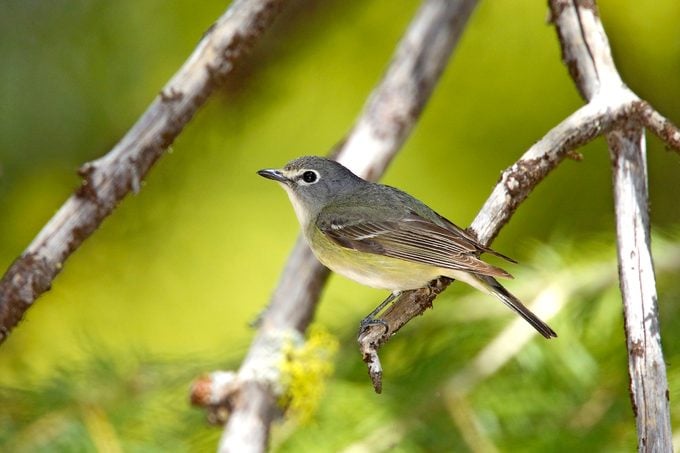
Cassin’s and Plumbeous Vireos
The Cassin’s vireo of the Pacific Northwest looks like a duller version of the blue-headed, while the plumbeous vireo of the Rockies has a similar pattern but entirely in lead-gray and white. At one time, all three were classified as the same species called the solitary vireo. All three sing short, whistled phrases like the red-eyed, although the western ones have a rough, husky undertone.
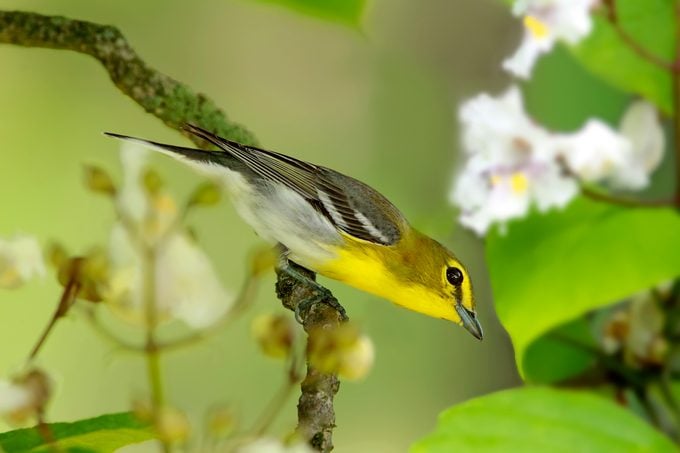
Yellow Throated Vireo
The yellow throated is even more colorful and is found during the summer in eastern oak forests, especially in the southeastern states. Its bright yellow throat and yellow eyeglass-like markings are quite distinctive. The short phrases of its song have a hoarse, buzzy quality, and its slow, lazy cadence is perfect for hot summer afternoons.
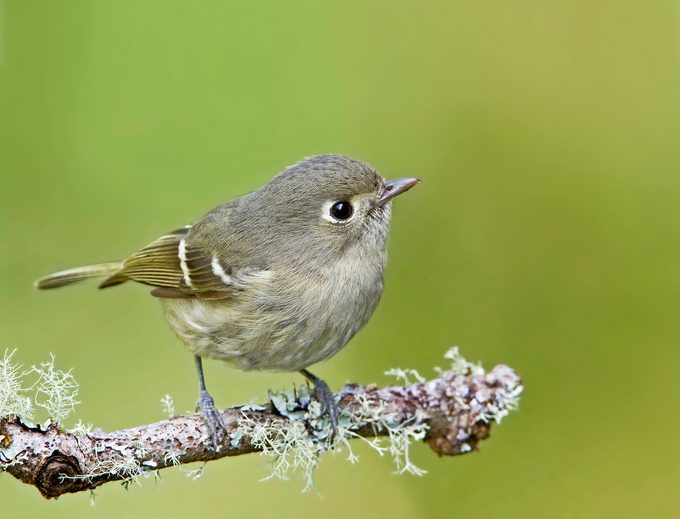
Hutton’s Vireo
The smallest of the spectacled type is Hutton’s vireo, a year-round resident of oaks along the Pacific coast and in the Southwest. Tiny and active, it’s sometimes confused with the ruby-crowned kinglet, a completely unrelated bird. Hutton’s is drab gray, and it may have the most monotonous song, just a single slurred note repeated over and over.
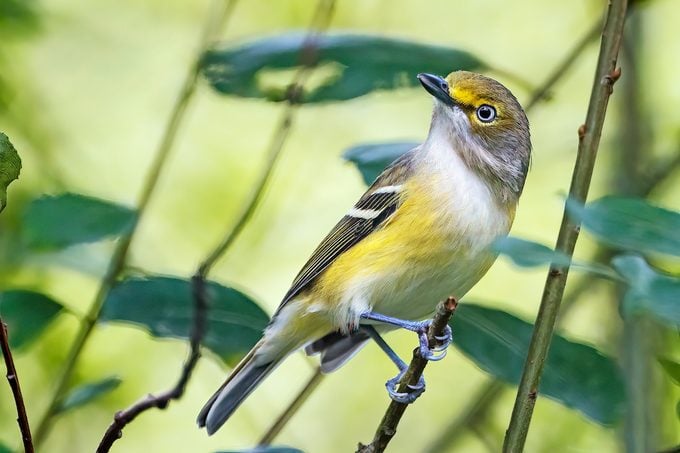
Vireos That Stay Low
White Eyed Vireo
Not all vireos dwell high in the trees. Some prefer dense, low cover close to the ground. Thickets in the southeastern states ring with the quick, snappy songs of white eyed vireos, sometimes written out as chip-o-de-white-oak! or pick-up-a-real-chick! Eventually this bird may come out to the edge of the shrubbery to look around, its staring white eyes giving it a surprised expression.
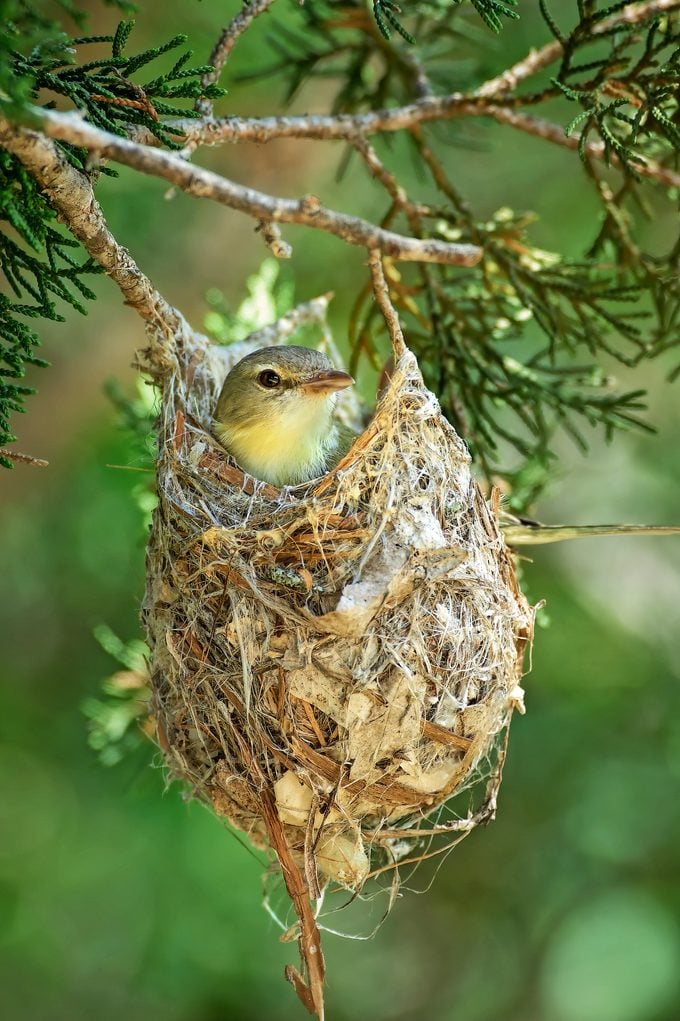
Bell’s Vireo
Another thicket dweller, found mostly in the Southwest and Great Plains, is the drab but active Bell’s vireo. Its song is a clinking cheedle-cheedle-chee? cheedle-cheedle-chew!, as if the Bell’s was asking and then answering the same question over and over.
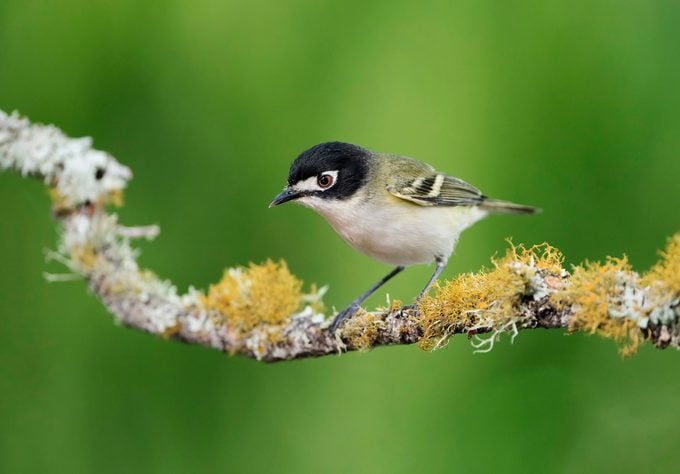
The Rarest Species
Black Capped Vireo
One of the most beautiful is also the rarest of the group: the black capped, with its black hood, white spectacles and red eyes. A scarce summer resident of scrub oak thickets in Texas and southern Oklahoma, its numbers have declined due to loss of habitat and the impact of cowbirds laying their eggs in vireos’ nests. Conservation work by the U.S. Army at Fort Hood, Texas, has helped to sustain good habitat for this bird.
How to Attract Vireos
Unfortunately, vireos almost never visit bird feeders. In spring and summer their diet is almost exclusively insects, especially caterpillars, so the best way to attract them is to have plenty of native plants in your yard and to avoid using pesticides that would kill off the insects the birds need to survive. If you have room to plant trees, oaks native to your area are a good bet for supporting them.
Before they migrate south in late summer and early fall, vireos consume many berries. Native dogwoods, elderberries and Virginia creeper are among their favorites. Even the treetop dwellers come down to eye level to feast on these fruits.
Another way to lure migrating vireos is to provide water. A shallow bath with a source of movement, such as a dripper or small fountain, may be just the thing to catch their attention. Check out the best bird baths and fountains for attracting birds.
However you attract them, it’s worth the effort to make the acquaintance of these secretive but reliable songsters.
Next, discover 15 types of hummingbirds found in the United States.




















